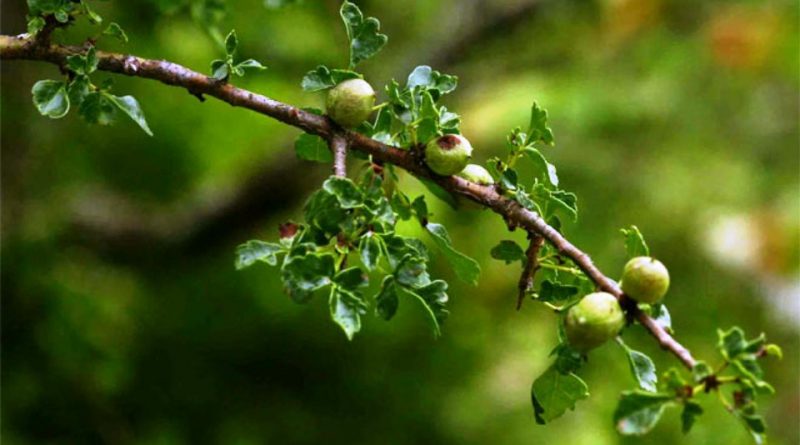Commiphora schimperi
Commiphora schimperi
The Glossy-leaved corkwood (Commiphora schimperi (O.Bergman) Engl.) is a shrub or small tree species belonging to the Burseraceae family.
Systematics –
From the systematic point of view it belongs to the Eukaryota Domain, Kingdom Plantae, Magnoliophyta Division, Magnoliopsida Class, Sapindales Order, Burseraceae Family, Commiphora Genus and therefore to the C. schimperi Species.
The terms are synonymous:
– Balsamea schimperi Engl. ;
– Balsamodendrum schimperi O.Berg;
– Commiphora arussensis Engl. ;
– Commiphora betschuanica Engl. ;
– Commiphora buraensis Engl. ;
– Commiphora flabellulifera Chiov. ;
– Commiphora neumannii Engl .;
– Commiphora resiniflua Martelli;
– Commiphora trothae Engl ..
Etymology –
The term Commiphora comes from the Greek κόμμι cómmi rubber, resin and from φορέω phoréo bring: which produces resin.
The specific epithet schimperi takes its name from George Wilhelm Schimper (1804-1878) who spent more than 40 years in Ethiopia where the type specimen comes from.
Geographic Distribution and Habitat –
Commiphora schimperi is a plant native to Namibia, Zimbabwe and northern South Africa. It is present in an area that includes East Africa, South Africa north of Ethiopia and Arabia.
Its habitat is usually on the rocky slopes or on the outcrops in the woods of Brachystegia or in mixed woods, at altitudes of 225 – 1,800 m. s.l.m ..
Description –
Commiphora schimperi is a plant in the form of a shrub or small tree.
The bark is dark green to yellowish green which flakes off in broad golden brown to yellowish streaks; dorsal pointed branches.
The leaves are grouped on small lateral ramifications, 3-foliolate or rarely imparipinnate with 2-4 pairs of leaflets; obovate leaflets, up to 5 × 3.5 cm, lateral leaflets about half the size of the terminal leaflet, more or less glossy green, glabrous; coarsely toothed margin; thin petiole, up to 3 cm long.
The flowers are collected in small sessile, red, cup-shaped axillary clusters, which appear before the leaves.
The fruits are ovoid, about 1.3 cm long, pointed, pale pink, which split to reveal a black seed almost entirely hidden by a bright red quadrilobed pseudo-aril.
Cultivation –
Commiphora schimperi is a spontaneous plant that grows in the driest areas of the tropics and subtropics, characterized by low rainfall and low relative humidity.
The plant is harvested in nature for its rubber.
Customs and Traditions –
Very similar to African myrrh (Commiphora africana (A.Rich.) Endl.).
The plant is used like other species of its genus and a gum-resin is collected from its stems.
Myrrh is also obtained from this plant.
The parts of the plant are used to treat a wide range of ailments: fruit for typhoid fever and stomach problems, bark for malaria, resin for seizures and to cover and disinfect wounds and burnt resin as an insecticide and aphrodisiac. Soft, termite-resistant wood is used for carving household tools, musical instruments, and general purpose items.
An edible oil is also extracted and parts of the tree exhibit strong fungicidal properties.
Preparation Method –
The methods of use of this plant are quite similar to those of other species of its genus and in particular of the African Commiphora.
Guido Bissanti
Sources
– Acta Plantarum – Flora of the Italian Regions.
– Wikipedia, the free encyclopedia.
– Treben M., 2000. Health from the Lord’s Pharmacy, Advice and experiences with medicinal herbs, Ennsthaler Editore
– Pignatti S., 1982. Flora of Italy, Edagricole, Bologna.
– Conti F., Abbate G., Alessandrini A., Blasi C. (edited by), 2005. An annotated checklist of the Italian vascular flora, Palombi Editore.
Warning: Pharmaceutical applications and alimurgical uses are indicated for informational purposes only, they do not represent in any way a medical prescription; we therefore decline all responsibility for their use for curative, aesthetic or food purposes.


